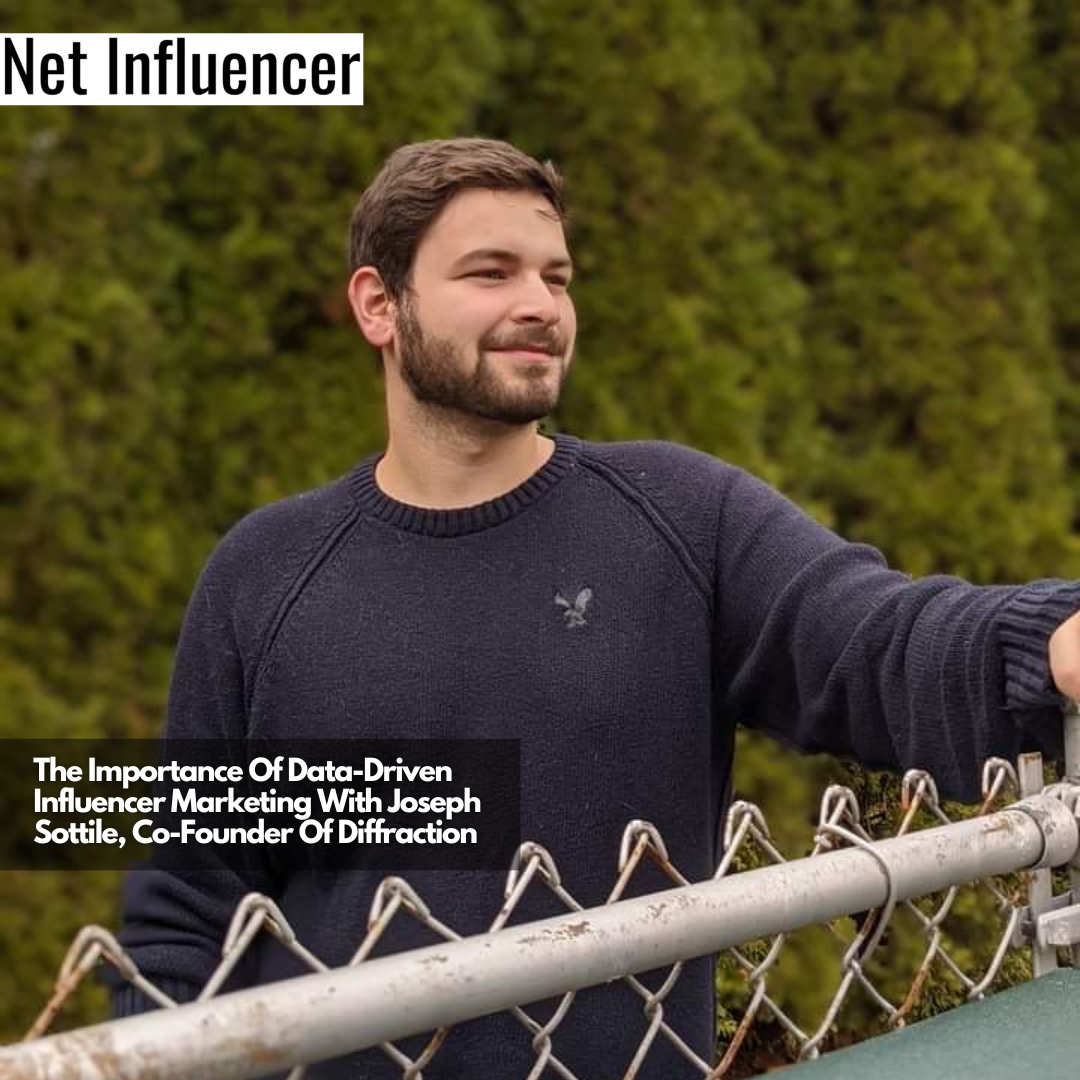Agency
The Importance Of Data-Driven Influencer Marketing With Joseph Sottile, Co-Founder Of Diffraction
How can brands know if their influencer marketing campaigns are really paying off? Data never lies. Diffraction is a data-driven influencer marketing firm making waves by focusing heavily on data to guide clients and create hard-hitting influencer marketing campaigns.
Joseph Sottile is the Co-Founder of Diffraction, a data-driven influencer marketing firm creating results-driven campaigns. He has an extensive background in influencer marketing, including previously working at InfluencerStuff as a Senior Account Manager and at Pikes Peak International Hill Climb as a Digital Marketing Specialist.
Joseph shares, “The reason I co-founded Diffraction was I eventually realized that the issue in influencer marketing is not that it’s highly competitive. It’s not that there’s so much content out there. It’s simply that the people implementing influencer marketing aren’t taking a data approach. They’re taking an opinion-based approach.”
Joseph Sottile co-founded Diffraction, a data-driven influencer marketing firm, in response to the typical opinion-based approaches to influencer marketing. Diffraction’s team uses metrics to examine a client’s audience and determine what methods align with their goals and audience.
He adds, “I co-founded Diffraction because I wanted to make influencer marketing attainable to everyone. We want to make sure that it’s not an obstacle, and the way to do that is by taking this analytical data approach.”
Another challenge within the industry that Diffraction’s team addresses are the lack of data sharing between the agency, creator, and client. Many companies don’t sit down and share data across these three sources, limiting everyone’s opportunity to learn what did and didn’t work from campaigns.
The Influencer Marketing Process
The Diffraction team takes a lot of time to sit down with their clients and learn exactly what they hope to achieve, what kind of content they want to create, and ideas about where to place ads.
For example, does a client want to focus on brand awareness, sales, or host giveaways and affiliate programs with influencers?
Joseph Sottile shares, “We go all the way down to even how the tone of the message is sent out and hammer that home and make sure that the audience is set up perfectly for them. The creators’ content type is set up perfectly for them. The type of content is set up perfectly for them, and then, of course, how that tone and message is actually executed.”
Diffraction’s intense data-driven approach, followed by detailed conversations with clients about the campaigns, separates them from other marketing firms.
In addition, Diffraction’s influencer marketing process focuses on detailed onboarding calls so the team can recommend the best creators tailored to the client’s needs rather than sending an extensive roster for the client to sort through.
This setup prevents a client’s time and money from being wasted on inefficient or ineffective campaigns.

Keeping Up with Marketing Trends
Marketing trends change at the drop of a hat.
Joseph subscribes to multiple marketing newsletters, like Influence Weekly, Hubspot, Stream Hatchet, and Marketing Brew, to keep up with the trends.
He strongly recommends marketers and CEOs study Jack Appleby’s newsletter and many resources for influencer marketers and CEOs.
Working Through Challenges in the Influencer Marketing Space
Joseph Sottile faced numerous challenges while working in the influencer marketing space, and one of the biggest was developing Diffraction’s process for implementing successful campaigns.
He explains, “It took two years of working with over 50 different clients to finally hammer home what it is that each one of those was wanting. It wasn’t a certain creator. It wasn’t a certain audience demographic. It was simply data and being able to share data.”
Joseph shares, “Understanding the importance of data is crucial for us to create successful campaigns for clients and ensure that creators are able to perform their best. Data is the backbone of any influencer marketing campaign. It allows us to track progress and analyze results, which helps us to pivot and adjust our strategies when necessary.”
For example, the Diffraction team can examine whether an influencer didn’t get enough engagement or if the client’s website was not appealing enough to visitors.
However, understanding and utilizing data is not always an easy feat. Explaining influencer marketing and the data from campaigns in ways that everybody could understand the value was another challenge Joseph initially faced.
As he shares, It’s crucial to be able to effectively communicate the value of influencer marketing campaigns with data to help clients understand their return on investment and for creators to continue to create high-performing content.
While data is essential, Joseph explains it’s not the only challenge within the creator economy.
Discrepancies in pay between creators can be a significant issue due to differences in followings, analytics, and audiences. It’s a complex industry to standardize pay within, and often, creators are overpaid or underpaid by one company, then expect the same treatment from other agencies or companies. This can lead to further confusion and challenges around this topic.
Joseph Sottile wraps it up with, “Data is a critical component of influencer marketing campaigns, and understanding its value is essential for success. We utilize data to help clients pivot when campaigns don’t bring the desired results, and we strive to effectively communicate the value of influencer marketing campaigns to our clients.”

2023 Marketing Trends
Short-form content contains to skyrocket. Joseph continues to see more and more brands wanting to use short-form content for advertising their products.
For creators, Joseph Sottile shares, “COVID taught us that if we’re going to be consuming content, it’s got to be good content. I’m going to skip through as soon as that content doesn’t have my attention. There are a million other pieces [of content] out there, and I want good content.”
He adds that organic and authentic content is also critical. Consumers are increasingly well-informed and can sniff out blatant ads that don’t fit well.
Authentic, genuine content will separate creators from the crowd because people want to know that who they are watching or listening to is a real person who isn’t always trying to sell them something.
For brands, he shares, “I would suggest taking it slow. A lot of the failures that I see in influencer marketing campaigns is rushing to get to the finish line instead of doing all this front loading to find out your primary, secondary, and tertiary goals. Create a creative brief for your creators to be able to send that message out properly.”
Creators using AI technology is another huge trend. With the help of AI, creators can generate content schedules, descriptions, titles, and more for their content without hiring other people.
Joseph Sottile adds, “There’s a whole bunch of AI influencers right now that are coming out. Vtubing. I’m not sure how that will affect the influencer marketing world specifically, but it is really cool to see this one niche of AI.”
Another positive trend is content creators building businesses that give back to the community.
Future Goals for Diffraction
Joseph Sottile shares, “The biggest goal for Diffraction is we want to win an ad or a marketing award with the content that we’re producing. That’s also why we’re taking such a data and analytical approach because it’s not just about money. We care about the performance.”
He is excited to see what brand, creator, and team will be involved in winning the first award.
In closing, he shares that Diffraction recently hired its first Junior Account Manager and is looking to hire more team members later this year. Joseph is also preparing to launch Diffraction’s social media presence soon, starting with Twitter.



















